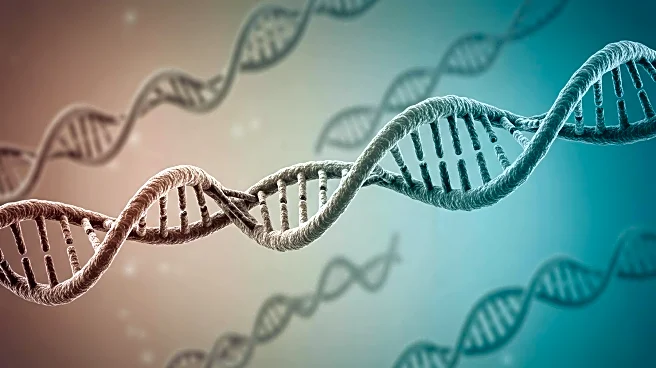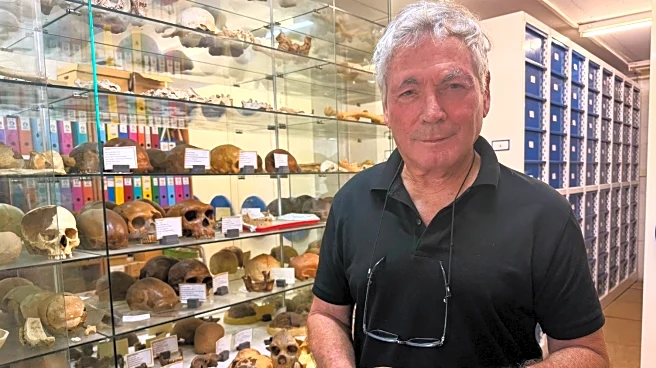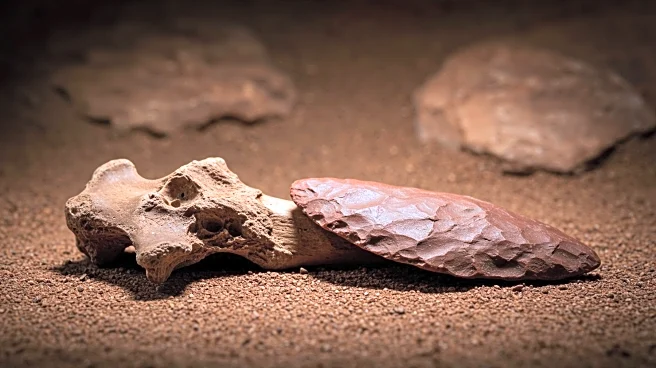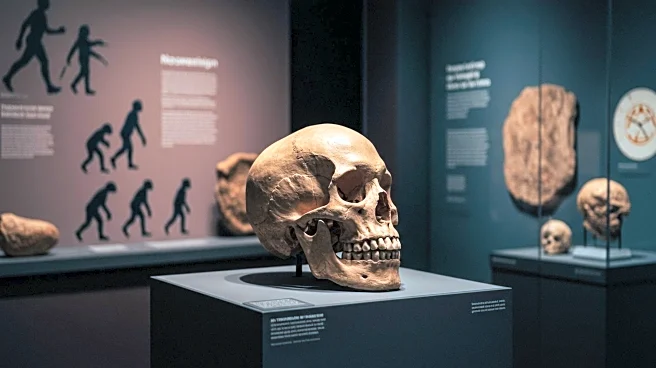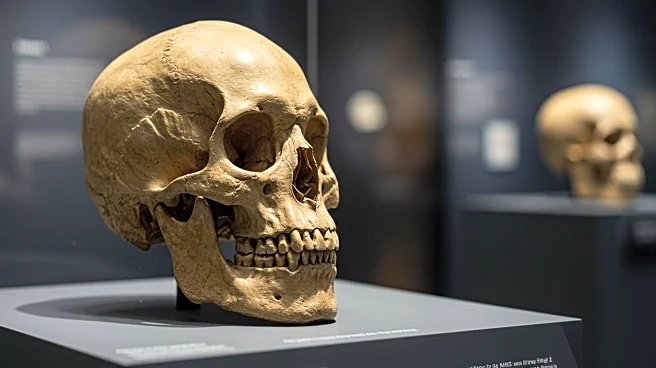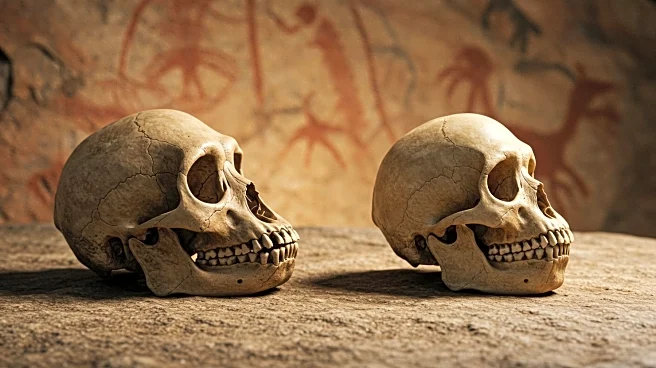What is the story about?
What's Happening?
A recent study published in the journal L’Anthropologie suggests that modern humans and Neanderthals may have interbred 100,000 years earlier than previously thought. Researchers used CT scans and 3D mapping to analyze the bones of a child found in Skhul Cave, Israel, dating back 140,000 years. The study indicates the child had traits of both Homo sapiens and Neanderthals, challenging previous timelines of interbreeding. The findings offer new insights into the interactions between these groups, suggesting peaceful coexistence and cultural exchanges.
Why It's Important?
This research could reshape our understanding of human evolution, highlighting the complexity of interactions between Homo sapiens and Neanderthals. The study challenges the notion of hostile encounters, suggesting a more harmonious relationship that included cultural exchanges. These findings may influence theories about the development of human societies and the spread of genetic traits. The use of advanced technology in archaeology also demonstrates the potential for revisiting historical conclusions with new methods.
Beyond the Headlines
The study raises questions about the nature of ancient human interactions and the factors that led to the eventual dominance of Homo sapiens. It suggests that cultural practices, rather than biological aggression, may have played a significant role in shaping human history. The research also highlights the importance of interdisciplinary approaches in archaeology, combining technology with traditional methods to uncover new insights.
AI Generated Content
Do you find this article useful?
